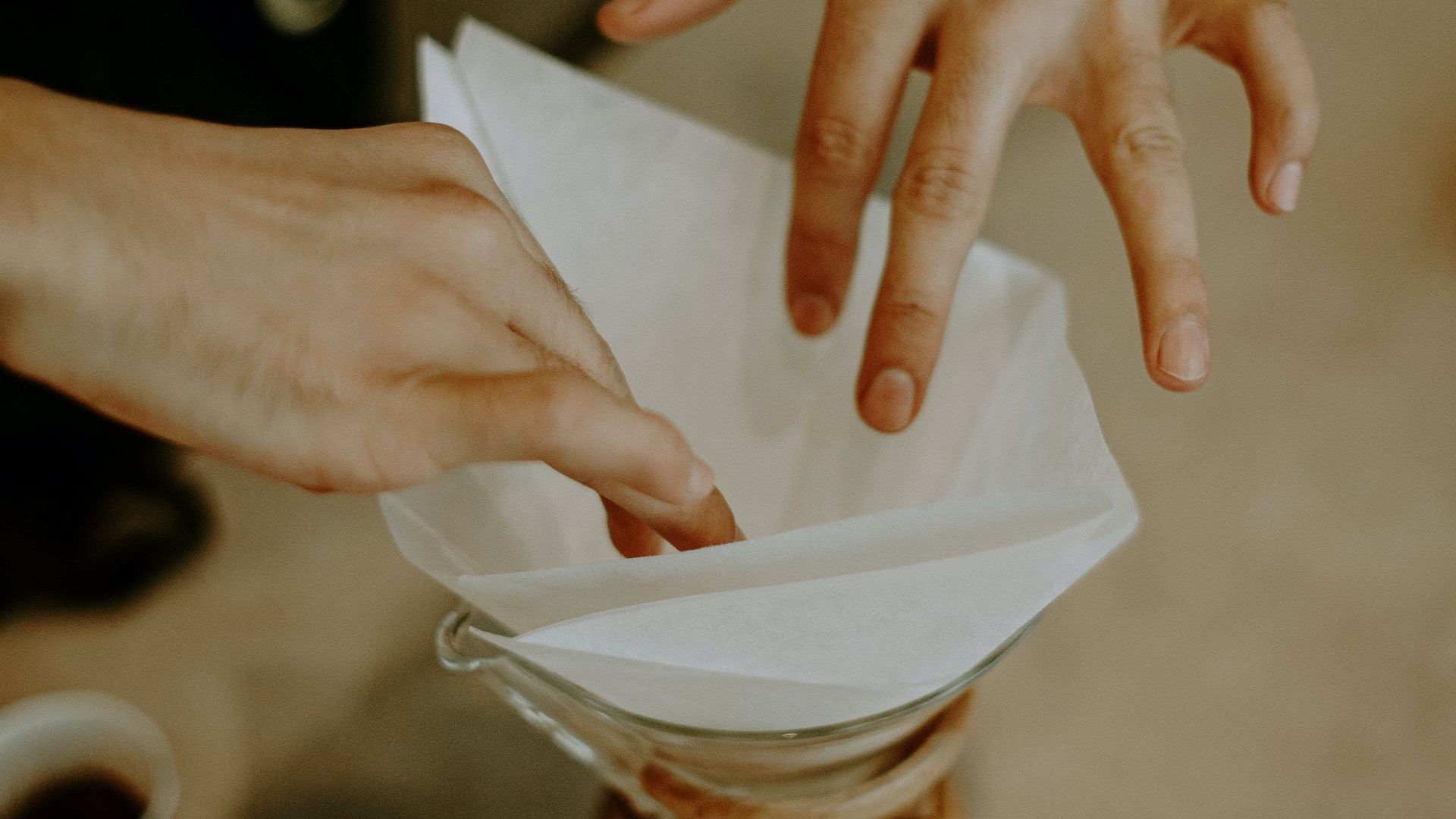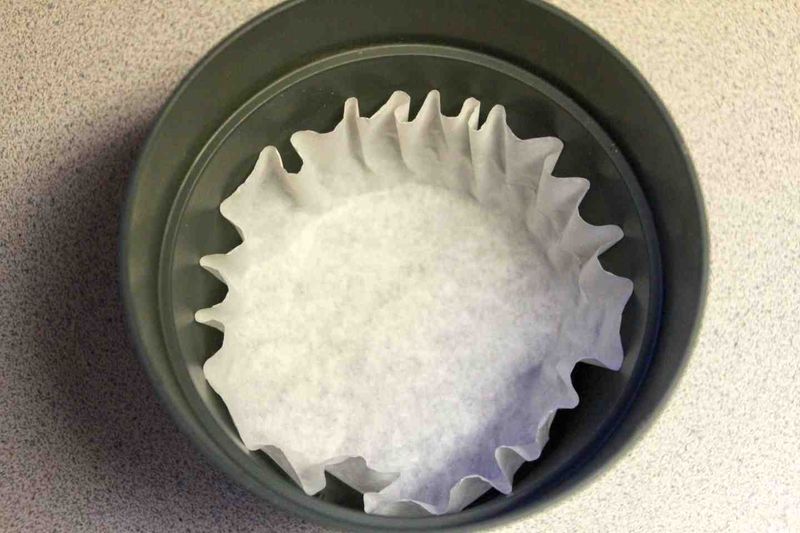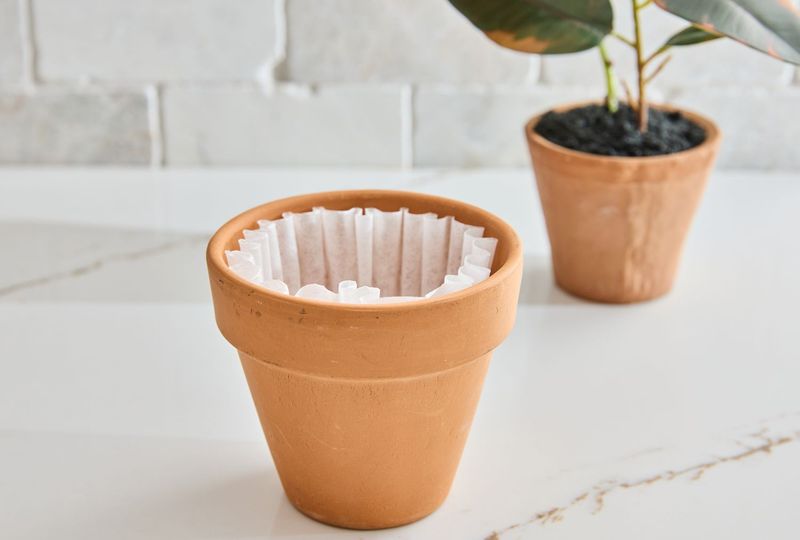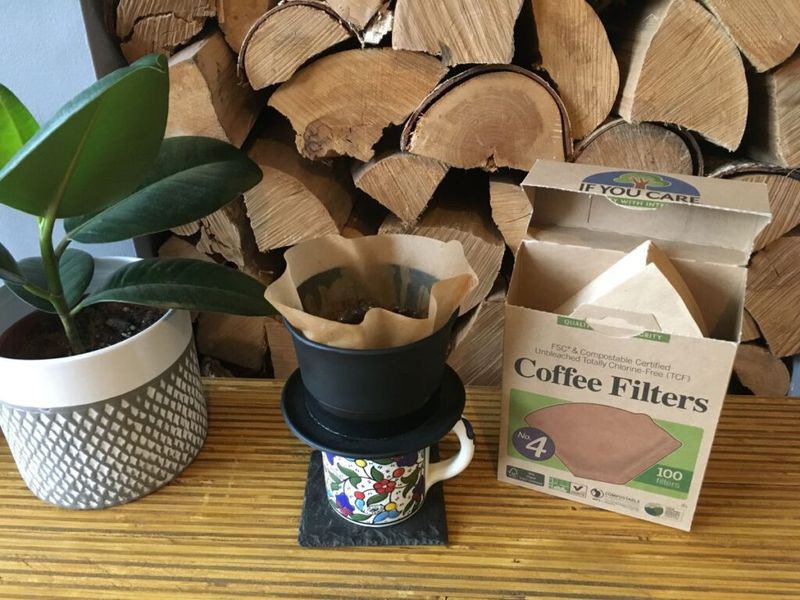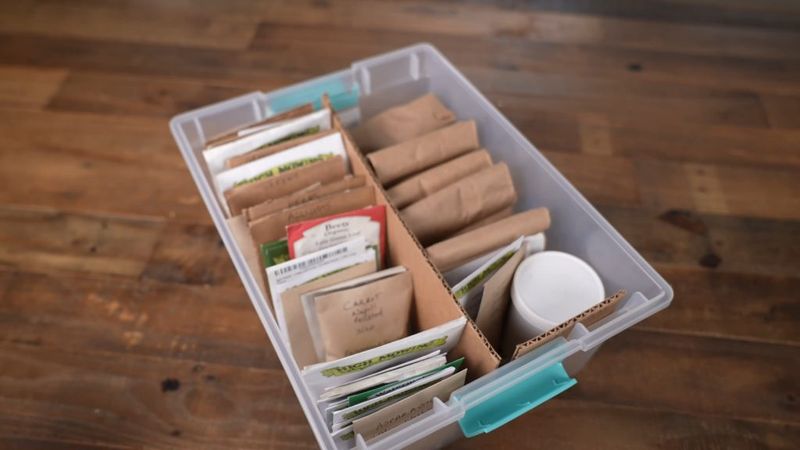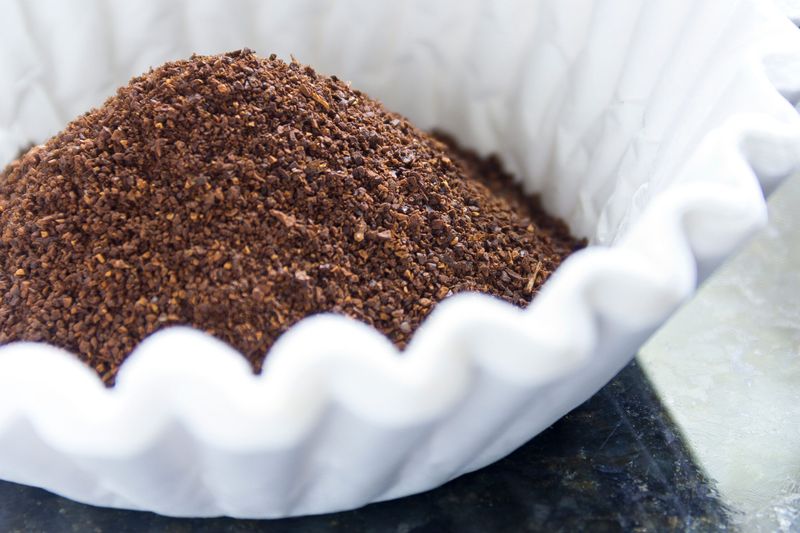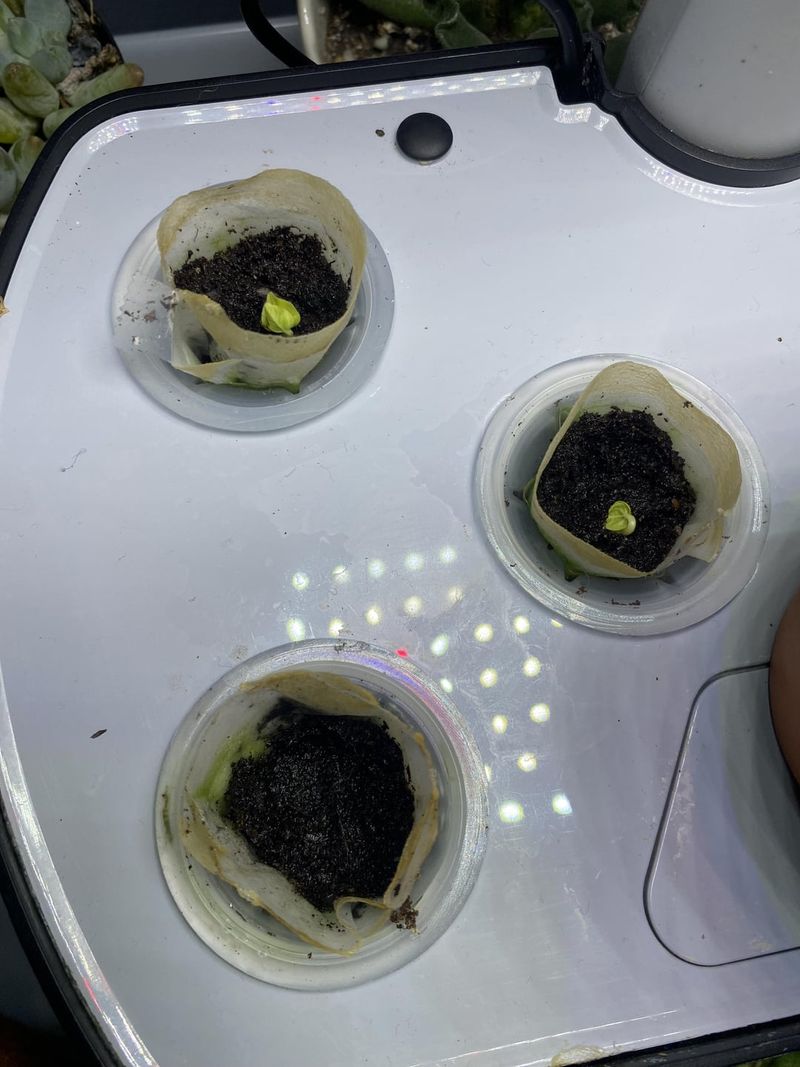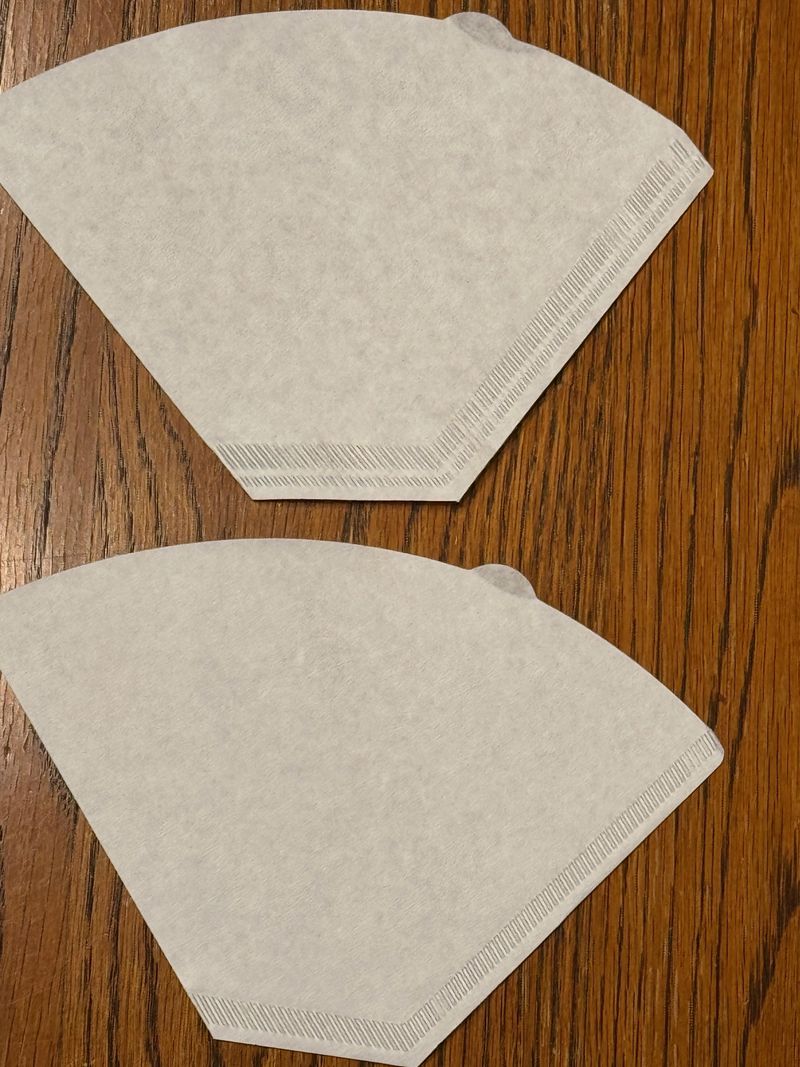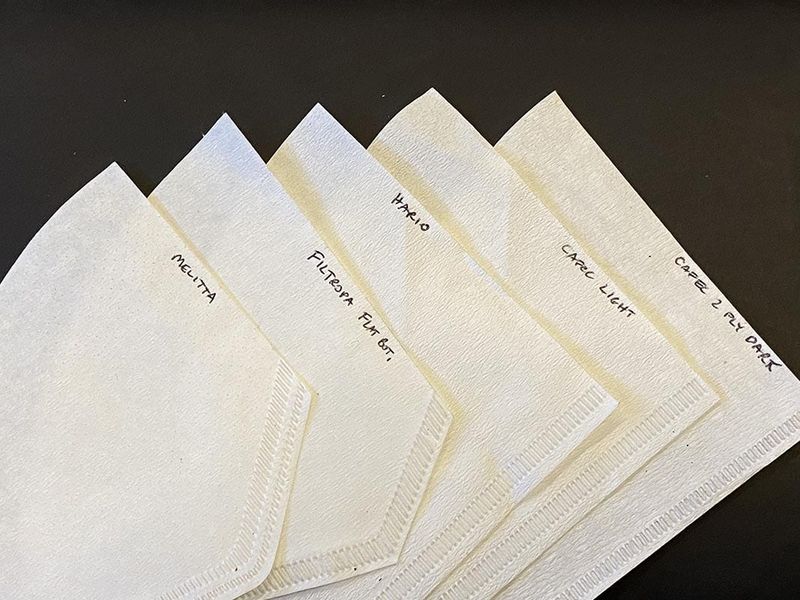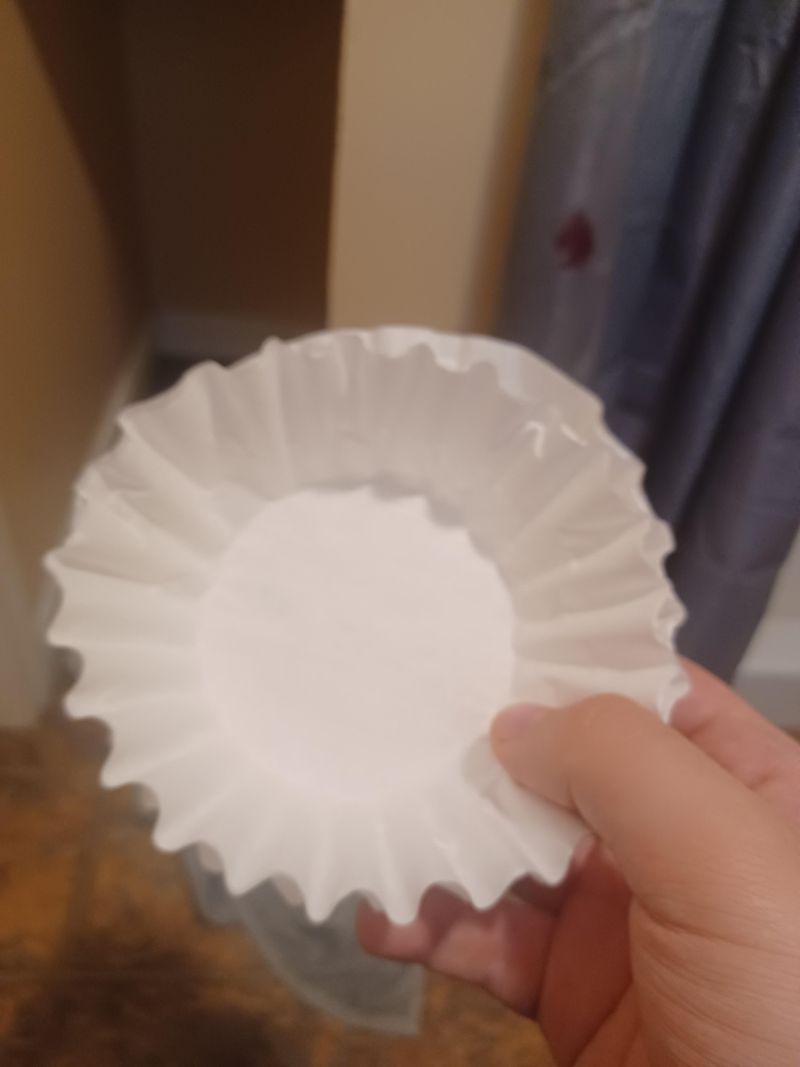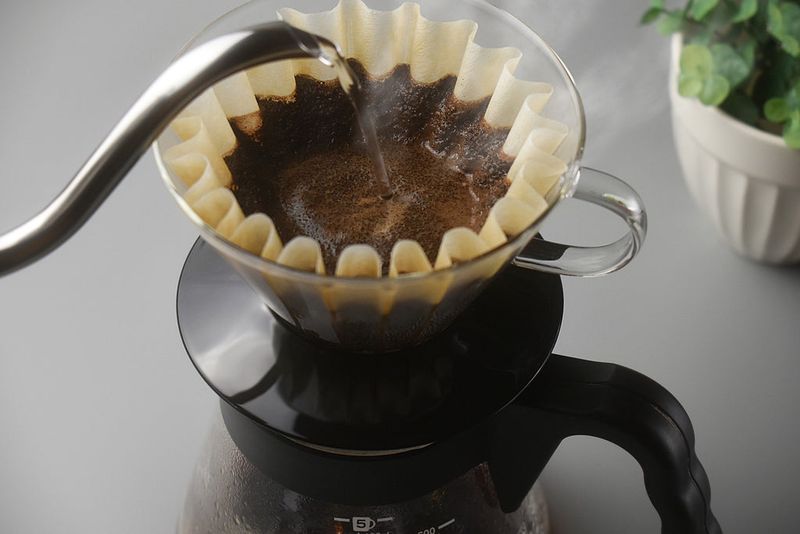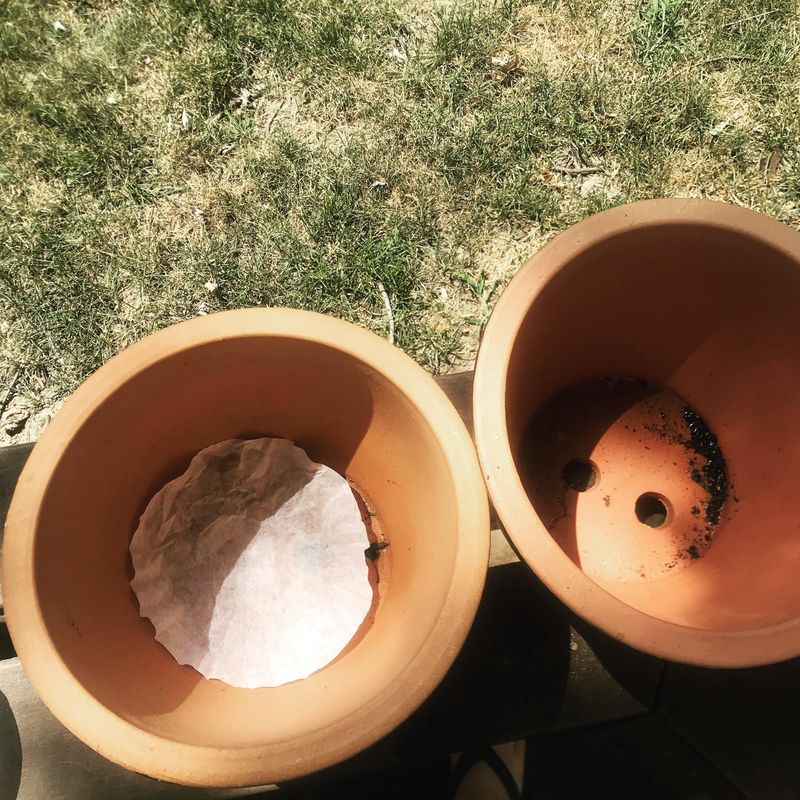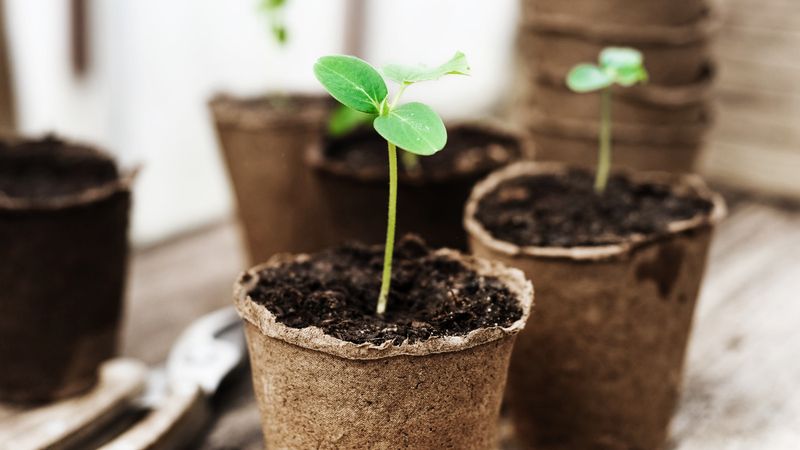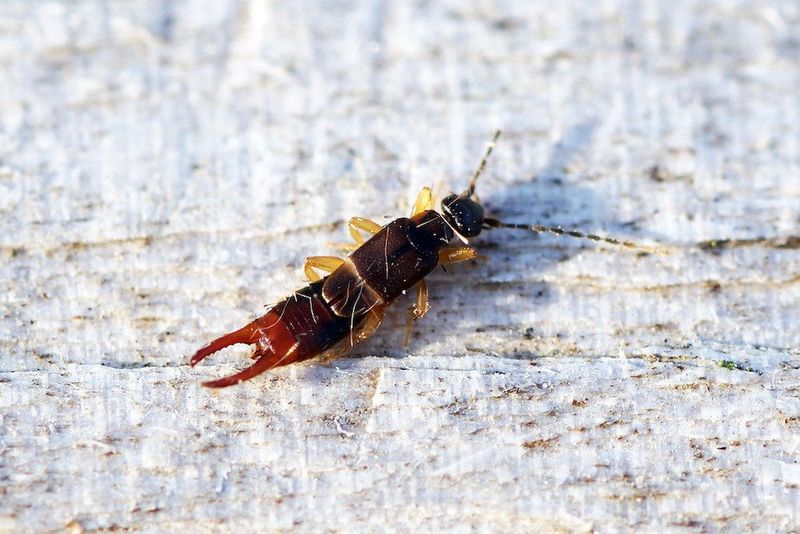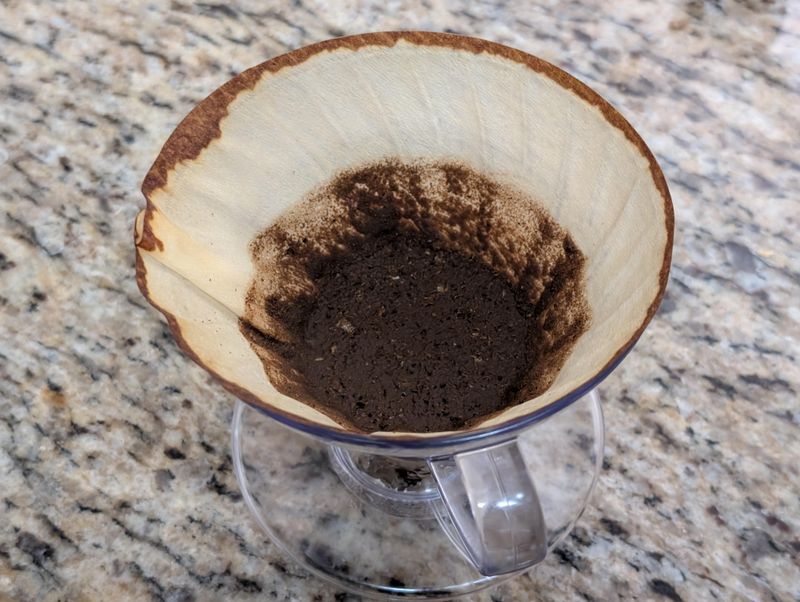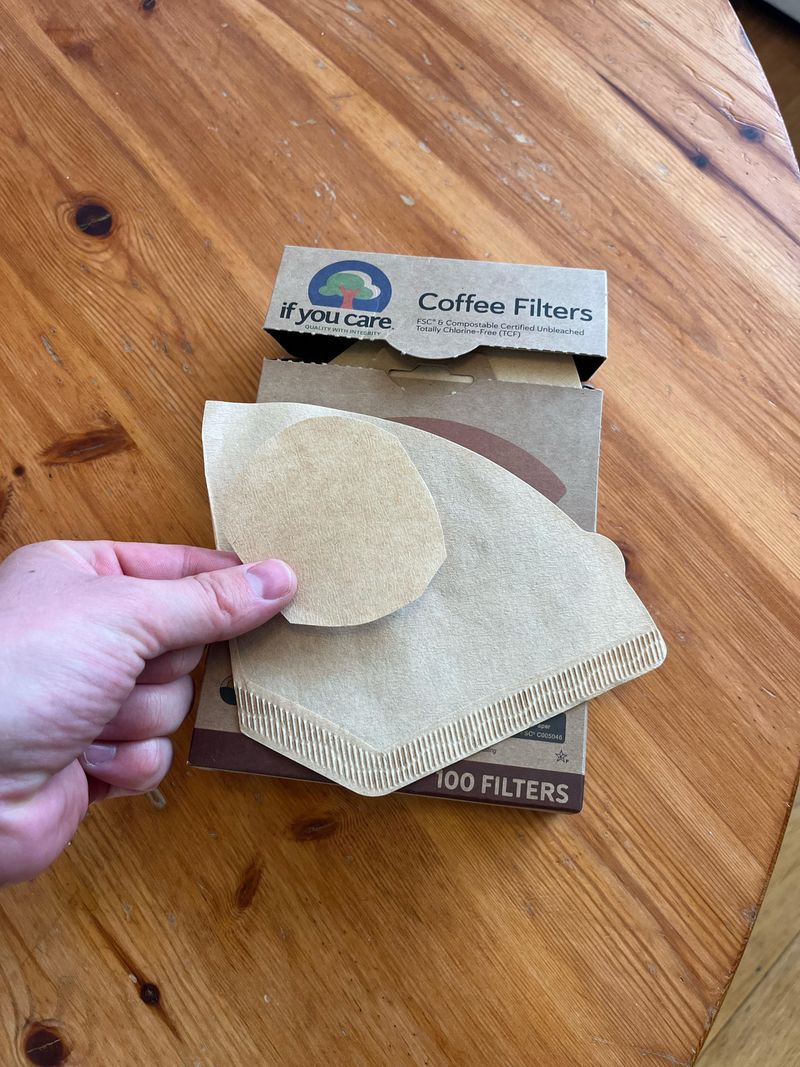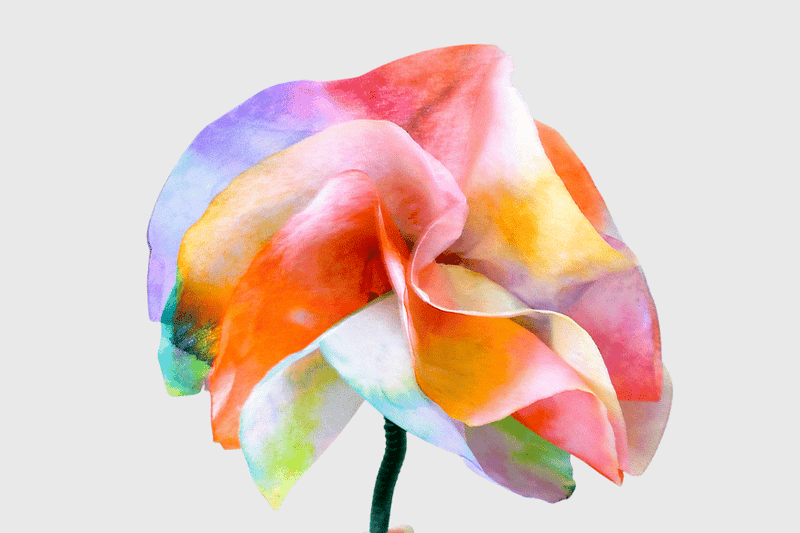If you’re anything like me, you’ve probably got a stash of coffee filters sitting in a kitchen drawer—and not just because you’re a caffeine lover. But once I started using them in the garden, I realized they’re kind of a secret weapon—especially when it comes to seed starting.
Coffee filters are surprisingly handy for all sorts of little gardening tasks. They’re soft, inexpensive, and super versatile. Over time, I’ve found more and more ways to use them. They help me stay organized and make the whole process feel a bit more manageable (and a lot less messy).
So, if you’re gearing up for the next round of seed starting, grab those coffee filters! You’ll be amazed at how they can make things cleaner, easier, and just a little more fun. You might never look at that little paper circle the same way again.
1. Improving Drainage
Think of coffee filters as your ally against soggy soil. By lining the bottom of your seed trays with these filters, you can ensure proper drainage, preventing water from pooling and potentially drowning your seeds.
This is especially useful for seeds that require a delicate balance of moisture. It acts as a gentle barrier, allowing water to pass through while retaining soil.
You’ll notice how much healthier and robust your seedlings can become when they aren’t sitting in stagnant water, which can lead to root rot and other issues.
2. Preventing Soil Leakage
Have you ever noticed soil leaking out from the bottom of your pots? Coffee filters can solve this. Placing a filter at the bottom of a pot creates a barrier that keeps soil in while letting excess water escape.
This technique is particularly useful when sowing tiny seeds that can easily slip through larger drainage holes.
It helps maintain a clean workspace and prevents you from losing precious soil with every watering. Plus, it’s an easy way to repurpose old filters and give them a second life in your garden.
3. Labeling Seedlings
Coffee filters are surprisingly handy for labeling your seedlings. Cut them into strips and use a waterproof marker to write the names of your plants.
They hold ink well and won’t disintegrate quickly in moist conditions. This can help you keep track of different varieties and ensure you’re not left guessing which plant is which when they start sprouting.
The process is simple, effective, and eco-friendly, making it a clever solution for gardeners looking to stay organized without resorting to plastic labels.
4. Seed Packet Organization
If you have a growing collection of seeds, organization is key. Coffee filters can help you sort and store these seeds efficiently.
Use them as envelopes by folding them into small packets and labeling them with the seed type and date. This method not only keeps your seeds in order but also protects them from moisture and pests.
The filters’ porous nature allows seeds to breathe, preventing mold and extending their viability. It’s a functional and sustainable way to manage your seed inventory.
5. Transplanting Aid
Transplanting can be stressful for seedlings, but coffee filters make it easier. They support the root ball when moving young plants from their starting pots to the garden.
Simply plant the seedling in a small cup lined with a coffee filter. When it’s time to transplant, lift the filter and plant it directly into the soil. The filter will decompose, allowing roots to spread naturally.
This method reduces transplant shock, as it minimizes root disturbance, giving your plants a better start in their new environment.
6. Creating Seed Mats
Seed mats are a convenient way to plant seeds with equal spacing. By gluing seeds onto coffee filters in a planned pattern, you can create your own.
This ensures that when it’s time to plant, your seeds are evenly distributed, leading to uniform growth. Coffee filters are ideal for this task because they degrade naturally, allowing seeds to germinate without obstruction.
Not only does this save time and effort during planting, but it also helps avoid overcrowding, giving each seedling the room it needs to thrive.
7. DIY Seed Tape
Making seed tape from coffee filters is another crafty way to use these kitchen staples. Cut filters into strips and glue seeds at regular intervals, ensuring precise placement in your garden beds.
This technique is particularly beneficial for small seeds that require even spacing, like carrots or lettuce. It simplifies the planting process and improves germination success by ensuring each plant has enough space to grow.
Plus, it’s a fun activity that combines gardening with a touch of creativity.
8. Moisture Retention
Maintaining the right moisture level is crucial for seed germination, and coffee filters can help. Placing a filter on top of your seed trays slows evaporation, keeping the soil consistently moist.
This is particularly useful in dry climates where water can quickly evaporate. The filter acts as a gentle barrier, ensuring that your seeds remain hydrated without becoming waterlogged.
This simple addition can make a significant difference in your germination rates, helping your garden get off to a strong start.
9. Fungus Prevention
Coffee filters can also help in preventing fungal growth during seed starting. Covering the soil surface with a filter minimizes exposure to airborne spores that cause damping-off, a common issue in seed starting.
The filter lets light in but keeps fungal spores at bay, providing a protective barrier. It’s a practical solution that reduces the need for chemical fungicides and promotes healthy seedling development.
This eco-friendly method is ideal for gardeners looking to cultivate robust plants naturally.
10. Composting Starter
Coffee filters are a great addition to your compost, especially when starting seeds. They break down easily and add carbon to the compost, balancing the nitrogen-rich green materials.
Simply toss used coffee filters into your compost bin along with kitchen scraps. Over time, they decompose, enriching your compost with valuable nutrients.
This not only reduces waste but also supports sustainable gardening practices. It’s an effortless way to contribute to a healthier garden ecosystem.
11. Gentle Seed Cover
For seeds that need a light covering, coffee filters offer a soft touch. Lay a filter over soil and sprinkle seeds on top, allowing them to settle into the tiny gaps.
This creates a natural cover that won’t compact the soil, ensuring seeds can sprout easily. It mimics the gentle covering nature provides, without the risk of soil crusting.
This method is ideal for seeds needing light exposure to germinate, offering a balanced environment for them to thrive.
12. Starter Pots
Transform coffee filters into biodegradable starter pots. By folding them into small cups and filling them with soil, you create an ideal environment for seedlings.
These pots can be planted directly into the garden, minimizing root disturbance. The filter decomposes, allowing roots to expand freely.
This method is cost-effective, eco-friendly, and perfect for gardeners looking to reduce plastic use. Plus, it’s a simple DIY project that requires no special tools or skills, making it accessible to everyone.
13. Natural Pest Barrier
Coffee filters can act as a natural barrier against pests. By placing them around seedlings, they can deter small insects and slugs from reaching your plants.
The texture of the filter is unappealing to many pests, offering a chemical-free way to protect young plants. This method is especially useful for organic gardeners who prioritize natural pest control solutions.
It’s an easy, environmentally-friendly approach to safeguarding your seedlings as they grow.
14. Seed Drying Rack
Drying seeds properly is crucial for storage, and coffee filters provide an excellent surface for this. Spread seeds across a filter and let them dry in a well-ventilated area.
The filter absorbs moisture, ensuring seeds dry evenly and preventing mold. This approach is gentle on delicate seeds and helps maintain their viability for future planting.
It’s a straightforward and effective method to prepare seeds for long-term storage without the risk of damage.
15. Reusable Cleaning Wipes
Once your coffee filters have served their purpose in seed starting, they can be repurposed as cleaning wipes. Use them to wipe down gardening tools, removing dirt and preventing rust.
The texture of the filter is perfect for scrubbing without scratching surfaces. This reduces waste and adds value to your gardening routine.
It’s a practical way to extend the life of your filters, making them a sustainable choice for gardeners who prioritize eco-friendly practices.
16. Color-Coding Plants
Color coding with coffee filters can simplify plant management in your garden. Dye filters in different colors and use them to identify plant varieties or planting groups.
This visual organization method can help you keep track of planting schedules, growth patterns, and harvest times. It’s a creative way to enhance your gardening strategy, especially in larger setups where maintaining order can be challenging.
Plus, it adds a splash of color to your garden space, making it more inviting.
17. Mold-Free Storage
Keeping stored seeds mold-free is essential, and coffee filters can help. Place a filter in storage containers with your seeds to absorb excess moisture. This prevents mold growth, maintaining seed viability.
The porous nature of the filter allows air circulation while protecting against humidity. It’s a simple yet effective way to ensure your seed collection remains healthy and ready for the next planting season.
This method supports long-term storage goals without complicated procedures or materials.

